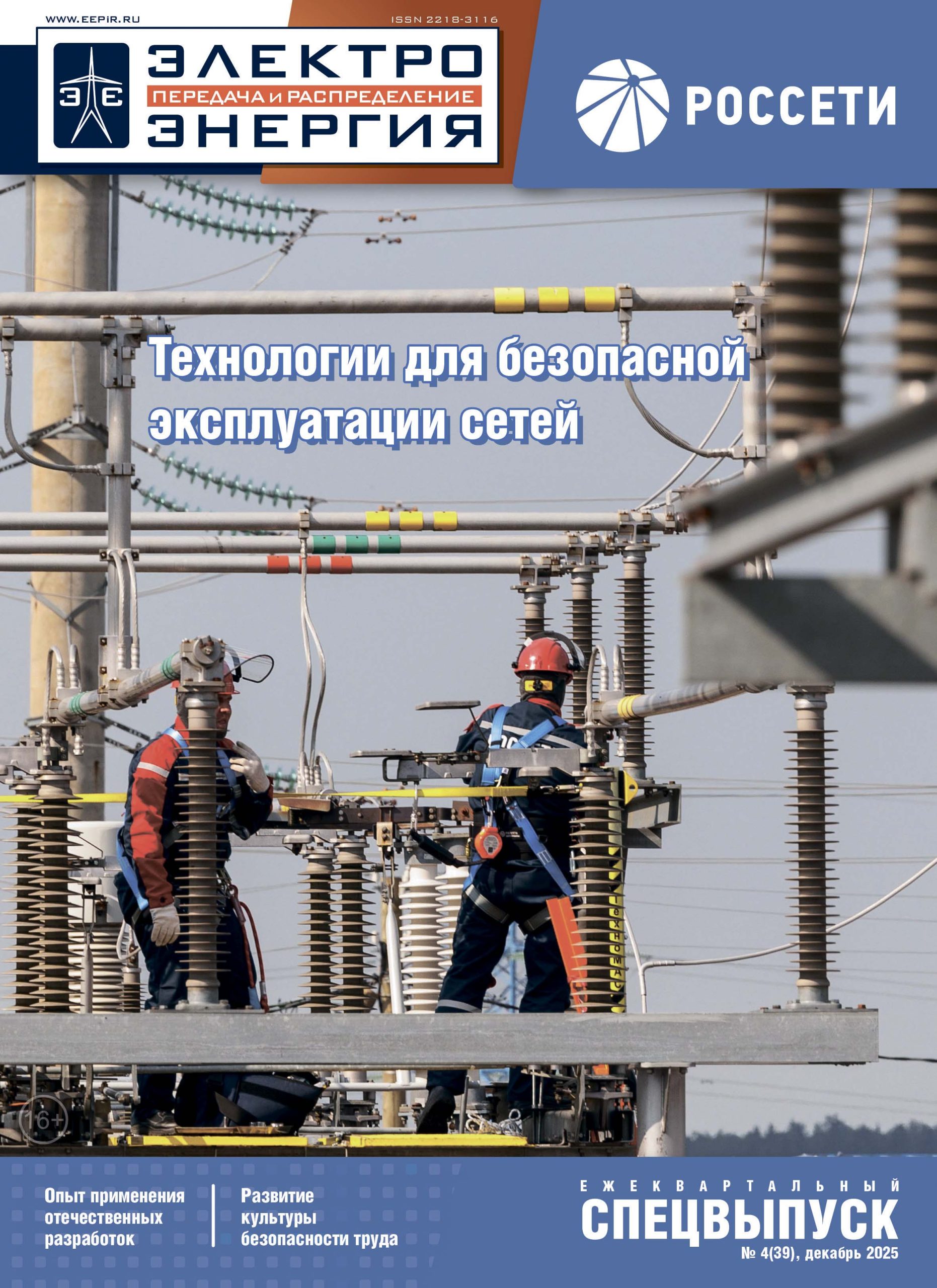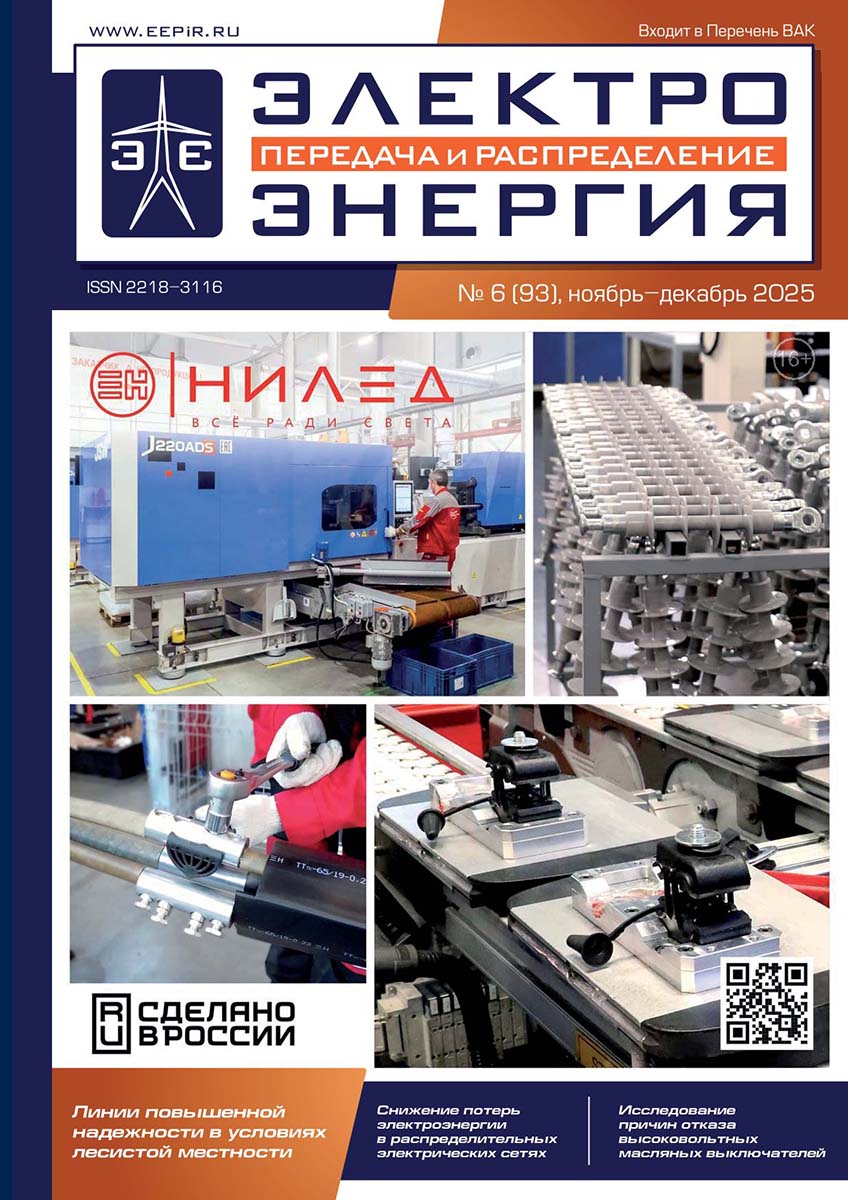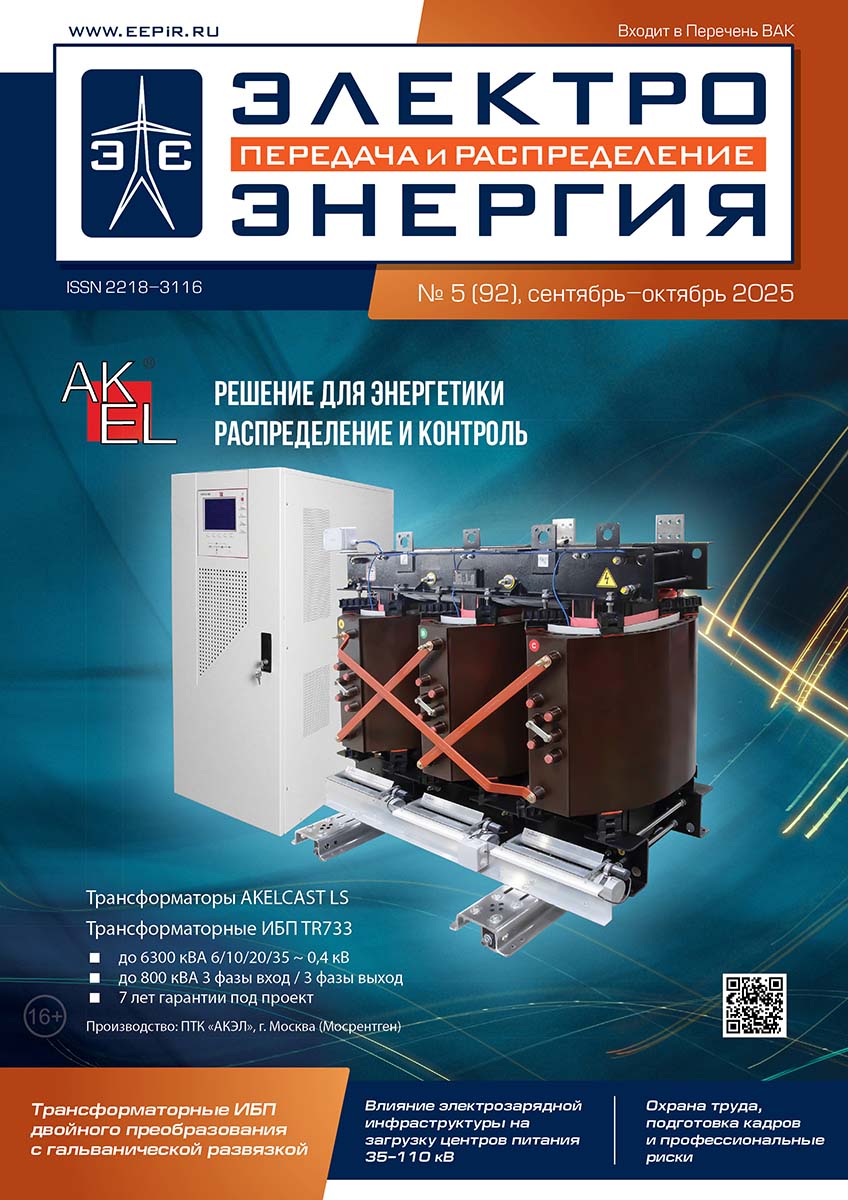 2019 eepir/1 (52) 2019_обложка.jpeg)
17 февраля 2019
«ЭЛЕКТРОЭНЕРГИЯ. Передача и распределение» № 1(52), январь-февраль 2019
СОБЫТИЯ
УПРАВЛЕНИЕ АКТИВАМИ
АКЦЕНТ
РАЗВИТИЕ СЕТЕЙ
УДК 621.311.001.57
РАЗВИТИЕ СЕТЕЙ
ЭНЕРГОСНАБЖЕНИЕ
ЭНЕРГОСНАБЖЕНИЕ
ЭНЕРГОСНАБЖЕНИЕ
ВОЗДУШНЫЕ ЛИНИИ
ВОЗДУШНЫЕ ЛИНИИ
ВОЗДУШНЫЕ ЛИНИИ
УДК 621.311.1:621.3.019.3
КАБЕЛЬНЫЕ ЛИНИИ
РЕЛЕЙНАЯ ЗАЩИТА И АВТОМАТИКА
РЕЛЕЙНАЯ ЗАЩИТА И АВТОМАТИКА
ДИАГНОСТИКА И МОНИТОРИНГ
ДИАГНОСТИКА И МОНИТОРИНГ
ДИАГНОСТИКА И МОНИТОРИНГ
ПОЖАРНАЯ БЕЗОПАСНОСТЬ
TABLE OF CONTENTS
TOPICAL INTERVIEW
Is blockchain driving an evolution or a revolution in the energy ecosystem?
EVENTS
“POWER GRIDS” International Forum
Power quality management
V Research and practical conference “Equipment condition monitoring of power engineering facilities”
ASSET MANAGEMENT
About methodology of calculation of probability and evaluation of consequences offailure of functional knot and unit of basic technological equipment
EMPHASIS
Proposals for creating an integrated system aimed to manage the operation and development of power industry in Russia
GRIDS DEVELOPMENT
Approaches to the creation of in-line simulation of electric power systems
Experience of planning electrical networks development in large energy districts in the conditions of initial data uncertainty (on the example of the Troitskiy and Novomoskovskiy administrative districts of Moscow)
ENERGY SUPPLY
Research methods of calculation electric loads of shopping systems of industrial electric power supply
Load predictive modeling in power system nodes in the experimental software package
Сalculation of the reliability indicators of an autonomous power supply system power source under varying load conditions
OVERHEAD TRANSMISSION LINES
The choice of sequence of ice melting in power networks region taking into account responsibility of overhead
Аccuracy improving the fault location algorithms of 6–35 kV transmission lines for double earth faults with applying the iteration methods
Reliability characteristics of 6–10 kV overhead transmission lines with non-insulated and insulated wires
Overhead ground-wire cables. The results of comparative studies
Reliable supplier for power grid companies
CABLE LINES
Test results of superconducting cable line with helium management system
Abstract.
The paper briefly presents the results of the superconducting DC line development for the power system of St. Petersburg. The main attention is paid to the investigation of threatened emergency operation associated with break- downs in the cryogenic system. Analysis of the data obtained during emergency operation tests of the helium management system for a cable line is presented. Circuit diagrams of the helium management system are provided. Maximum admissible limits of the helium management system for high-temperature super- conductor cable (HTS) during emergency operation are determined. Potential transmission time of the rated power by cable in case of various cryogenic system failures was evaluated. As a result, an adjustment to the created interlock and protection system of HTS cable helium management system was proposed for enhancing the operation reliability in various modes.
Transients on 110–500 kV cable lines with shunt reactors
RELAY PROTECTION AND AUTOMATION
Phase comparision protection of overhead lines with the function of backup relay protection of power transformers and switches of substations connected to the line
Automatic reclosing of aerial cable lines using electronic optical current transformers. Pilot project at 220 kV “Gertsevo” substation
EQUIPMENT
Residual life accounting for high-voltage circuit breakers
DIAGNOSTICS AND MONITORING
Digitalization of overhead line poles diagnostics
Improving the accuracy of diagnosing transformer equipment in an emergency state
Optimization of traditional and high-accuracy synchronized phasor measurements for fast assessing power system state
X-ray examination of high-voltage circuit-breakers. Pilot operation of X-ray complex installation
FIRE SAFETY
Harmonization of national fire-hazard regulations in terms of electrical equipment testing for fire hazard
INDUSTRIAL INJURIES
Lessons learned from accidents
PERSONNEL TRAINING
Youth will form global forecast of power engineering development
GLOBAL EXPERIENCE
California: particular features of power system control taking into account a large share of renewables
JOURNEY THROUGH THE PAST
Museum Tour
Read online










